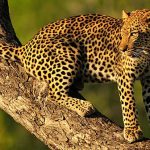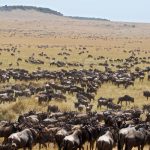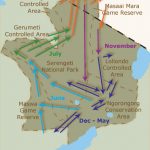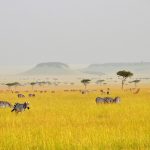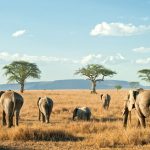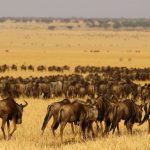Serengeti spectacular 4WD game-viewing
WELL KNOWN FOR ITS ANNUAL MIGRATION
IT OFFERS THE MOST SPECTACULAR GAME-VIEWING
Serengeti
A survival of the fittest
Long columns of wildebeest jump in crocodile-infested waters on the annual travel. They will replenishing the species in a brief population explosion that produces more than 8.000 calves daily. After that the 1.000 km (600 mile) pilgrimage begins again.
The show of predator versus prey. Golden-maned lions thrive on the abundance of plain grazers. Solitary leopards hide in the acacia trees near the River. While a large amount of cheetahs wander the southeastern plains. But also smaller predators, like the African jackal, the spotted hyena and the beautiful serval cat.
Spectacular 4WD game-viewing
Even when the migration is quiet, the Serengeti offers the most spectacular game-viewing in Africa. Great herds of buffalo, smaller groups of elephant and giraffe. And thousands upon thousands of eland, topi, kongoni, impala and Grant’s gazelle.
But there is more to Serengeti than large mammals. Lizards like the rock hyraxes and Gaudy Agama can be found around the park’s rocky outcrops. 500-plus bird species, ranging from the outsized ostrich and bizarre secretary bird, to the black eagles that lift off effortlessly above the Lobo Hills.
The sense of space is liberating
Unlimited space stretching across the savannah to a horizon at the end of the earth. But, after the rains, this golden field is transformed into an endless green carpet full of wildflowers. And there are also wooded hills and towering termite mounds, rivers lined with fig trees and acacia woodland.
The Serengeti is quite popular, but it remains so vast that you may be the only human around when a pride of lions just stroll by on their daily walk.
HOW TO GET THERE
With a 4WD it is a 335km drive from Arusha, but also easy drive from Lake Manyara, Tarangire or the Ngorongoro Crater.
WHAT TO DO
Hot air balloon safaris, Maasai rock paintings and musical rocks. Visit neighbouring Ngorongoro Crater, Olduvai Gorge, Ol Doinyo Lengai volcano and Lake Natron’s flamingos.
WHEN TO GO
To follow the wildebeest migration, December-July. To see predators, June-October
NOTE
The route and timing of the wildebeest migration is unpredictable. Allow at least three days to be assured of seeing them on your visit – longer if you want to see the main predators as well.
SIZE
14.763 square kilometer (5.700 sq miles).
ACCOMMODATION
Four lodges, four luxury tented camps and camp sites scattered through the park; one luxury camp, a lodge and two tented camps just outside.
Contact Form
If you want to contact Mkomwa. Or if you have a question.
Please fill this form and he will get back to you!

